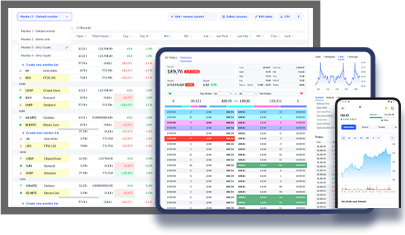Despite plowing billions of taxpayer dollars into the ailing
U.S. renewable industry, there's been little sign of new life in
the sector, says the head of one of the largest manufacturers in
the business.
And without a federal mandate requiring an increasing percentage
of electricity to come from renewable sources such as wind and
solar power, the U.S. industry is likely to remain in a funk for at
least another year, said Randy Zwirn, president of Siemens Energy,
a unit of Siemens AG (SI).
"There's no surge in order activity," since President Barack
Obama signed into law a nearly $800 billion economic stimulus
package, said Zwirn in a telephone interview. The bill included
around $15 billion in tax credits for the renewable industry, and
tens of billions of dollars in grants, loans and loan
guarantees.
Siemens - an international engineering, electronics, energy and
health-care conglomerate - maintains one of the biggest global
market shares of wind generation manufacturing, is a major
competitor in the solar sector and builds almost a third of the
components in U.S. power plants.
Although there's billions of dollars in renewable energy
production tax credits available, many of the biggest financiers
have limited tax liabilities in the current economic woes to
offset, "and I'm not sure in the next year or two how much tax
appetite is going to be," he said.
"Financing is still pretty difficult to come by...and a lot of
our customers have cut back on capital expenditures due to the
financial crisis," Zwirn said.
The company's biggest U.S. customers are firms such as Florida
Power & Light Co. (FPL), Iberdrola SA (IBR.MC) and American
Electric Power (AEP). Some of Siemen's biggest competitors in
generation, transmission and renewables are General Electric (GE),
ABB Ltd. (ABB), and Gamesa Corp. Tecnologica (GAM.MC).
Share prices for many publicly traded renewable companies have
plummeted and remain relatively grounded. For example, the Market
Vectors Global Alternative Energy fund, which traded at a high of
$62 in October last year, have fallen to around a one-quarter of
that level, trading around $16 a share this week. Invesco's
PowerShares Global Wind Energy Portfolio has dropped from a high of
near $30 late last year to around $10 recently.
Siemens itself has seen its share price fall from around $160 in
late 2007 to around $56 a share this week.
The key problem is demand. With an economy still in the depths
of a recession, electricity consumption has fallen or remained flat
in many areas. There's also little incentive for renewables to
compete with natural gas generation, which is much cheaper right
now than wind or solar projects.
Adding to the list of challenges to Obama's pledge to double
renewable energy production by 2012 is a massive transmission
shortage. Companies won't build expensive high voltage lines needed
to connect wind and solar projects to the demand centers unless the
renewable projects are approved, and those projects won't get
okayed without new transmission. Getting those lines sited,
financed and built is a process that can take years.
Zwirn is also skeptical about a massive influx of new
transmission investment, despite more than $11 billion in direct
funding for the industry and billions more in loan guarantees in
the recovery bill.
"Do we really expect in the short term there will be a large
number of (grid) projects that are shovel-ready?," he asked. "No, I
don't think so."
Obama and his team have pledged to double renewable energy
production by 2012, vowing economic recovery funds would stimulate
job growth in the near term with many "shovel-ready" projects
coming online once the financing is in place. Industry officials
say to renovate the entire national grid would take several hundred
billion dollars.
Furthermore, Energy Secretary Steven Chu is making energy
efficiency one of his highest priorities, which, if successful,
will stunt the need for generation growth even further.
"With both the market and economic factors...the environment is
not very good," Zwirn said.
In the face of such weak growth prospects and in an effort to
cut greenhouse gases, Congress is focused on artificially creating
demand.
Although the House has passed a renewable portfolio mandate last
year and could pass another bill that would require 25% of the
country's power to come from renewables by 2025, the Senate has
been a major roadblock for passage of a standard.
Despite a larger majority in the Senate, Democrat leadership
still faces legislative challenges from a number of southern
Democrats whose in-state utilities are opposed to a federal
mandate. The leading proposal would require a 4% standard in 2012
up to 20% by 2021. A certain chunk of the portfolio can be met
through energy efficiency measures, but many opponents want other
types of generation, such as nuclear power, that also has low
greenhouse gas emissions.
Administration officials say allowing other forms of low-carbon
generation would dilute the competitiveness of wind, solar and
other renewable projects. Facing opposition, Democrat leadership is
considering wrapping energy and climate provisions into a
controversial budget bill that could allow them to pass legislation
into law with only a marginal majority.
Zwirn says he thinks prospects for passage of a renewable
portfolio standard are mixed: "I would say 2010 is a better
year."
By Ian Talley, Of Dow Jones Newswires, 202-862-9285;
ian.talley@dowjones.com

